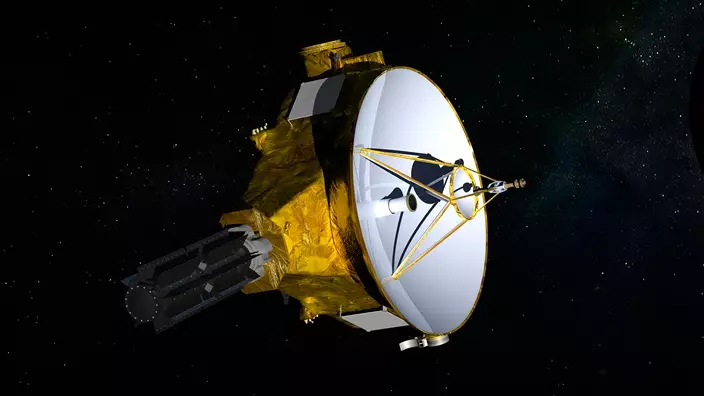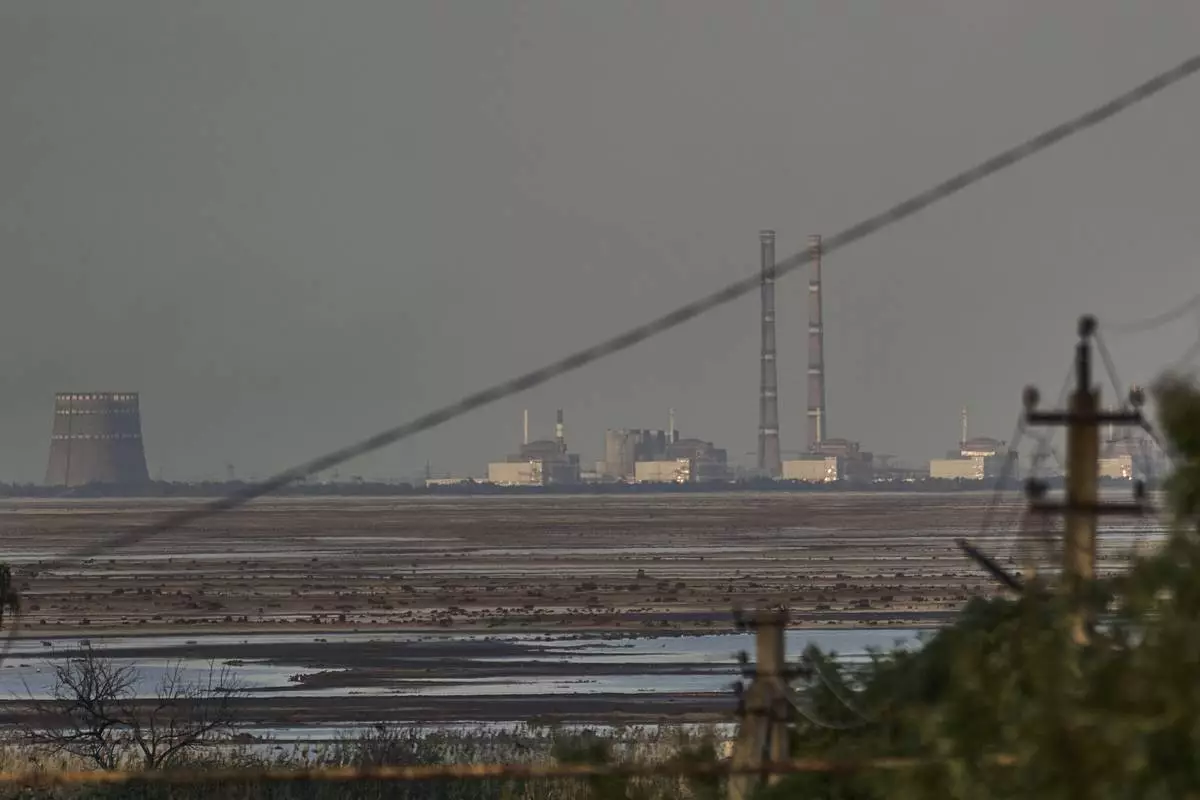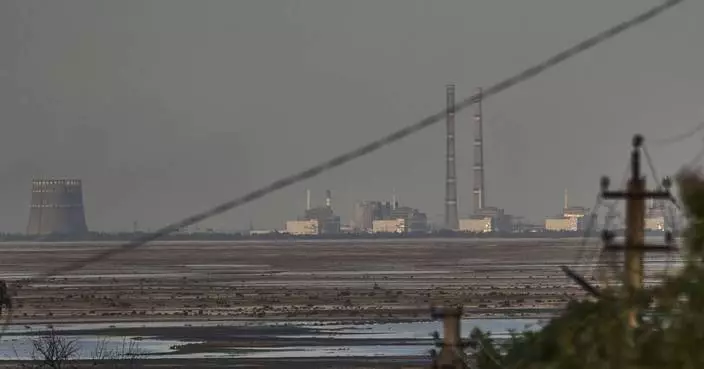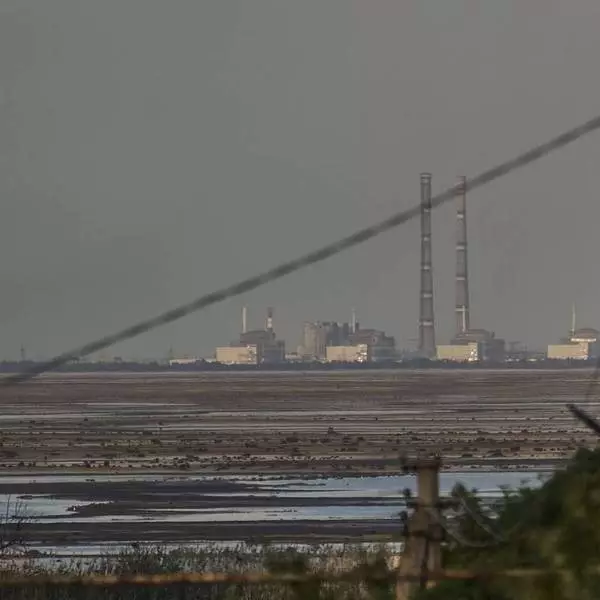There's a new nickname for the icy world next up for the spacecraft that explored Pluto: Ultima Thule.
NASA's New Horizons spacecraft is headed toward a New Year's Day encounter with this mysterious object or two, 1 billion miles beyond Pluto on the fringes of our solar system.

This illustration provided by NASA shows the New Horizons spacecraft. On Wednesday, March 14, 2018, NASA said the spacecraft is headed toward a New Year’s Day 2019 encounter with a mysterious object nicknamed "Ultima Thule", 1 billion miles beyond Pluto on the fringes of our solar system. (NASA/JHUAPL/SwRI via AP)
Its official name is 2014 MU69. The mission team wanted a less technical and more inspiring name and, late last year, sought public input . Announced Tuesday, the nickname Ultima Thule (THOO-lee) comes from medieval literature and refers to a distant, unknown world.
"MU69 is humanity's next Ultima Thule," New Horizons' lead scientist, Alan Stern of the Southwest Research Institute in Boulder, Colorado, said in a statement. "Our spacecraft is heading beyond the limits of the known worlds."
New Horizons will fly past Ultima Thule on Jan. 1, making it humanity's most distant encounter with another world. Discovered in 2014 and more than 4 billion miles (6.4 billion kilometers) from Earth, Ultima Thule is considerably smaller than Pluto, explored by New Horizons in 2015.
Scientists estimate it's no more than 20 miles (30 kilometers) across if a single object. If it is two objects orbiting one another, each one might be 9 miles to 12 miles long (15 kilometers to 20 kilometers). There might also be a small moon. No one will know for certain until New Horizons draws closer.
The team will choose a more formal name following the flyby.
For the nickname, more than 34,000 suggestions were whittled down to a list of 37 for public online voting.
The top vote-getter actually was the name of Thor's hammer — Mjolnir — of Norse mythology, followed by Z'ha'dum, a planet in the 1990s TV series Babylon 5. Ultima Thule ranked seventh.
NASA and the New Horizons team had the final say. It came down to what seemed most appropriate to the mission and its objectives, said NASA spokesman Dwayne Brown.
UNITED NATIONS (AP) — Russia and Ukraine on Monday traded blame before the United Nations Security Council for the attacks on Europe’s largest nuclear power plant, which the head of the International Atomic Energy Agency said have put the world “dangerously close to a nuclear accident.”
Without attributing blame, IAEA Director General Rafael Mariano Grossi said his agency has been able to confirm three attacks against the Zaporizhzhia Nuclear Power Plant since April 7.
“These reckless attacks must cease immediately,” he told the Security Council. “Though, fortunately, they have not led to a radiological incident this time, they significantly increase the risk … where nuclear safety is already compromised.”
The remote-controlled nature of the drones that have attacked the plant means that it is impossible to definitively determine who launched them, Grossi told reporters after the meeting.
“In order to say something like that, we must have proof,” he said. “These attacks have been performed with a multitude of drones.”
Zaporizhzhia sits in Russian-controlled territory in southeastern Ukraine and has six nuclear reactors.
Fears of a nuclear catastrophe have been at the forefront since Russian troops occupied the plant shortly after invading in February 2022. Continued fighting between Russian and Ukrainian forces — as well as the tense supply situation at the plant — have raised the specter of a disaster.
Ukraine and its allies on Monday again blamed Russia for dangers at the site, with the United States saying, “Russia does not care about these risks.”
“If it did, it would not continue to forcibly control the plant,” U.S. deputy ambassador Robert Wood told the Security Council, which met at the initiative of the U.S. and Slovenia.
Russia, for its part, said Ukraine was to blame for the attacks.
“The IAEA’s report does not pinpoint which side is behind the attacks,” Russia’s U.N. Ambassador Vassily Nebenzia said. “We know full well who it is.”
“Over the last few months, such attacks not only resumed,” Nebenzia said, “they significantly intensified.”
Ukraine’s ambassador to the U.N., Sergiy Kyslytsya, called the attacks “a well-planned false flag operation by the Russian Federation,” which he alleged Russia had designed to distract the world from its invasion of its neighbor.
The Zaporizhzhia facility is one of the 10 biggest nuclear plants in the world. Fighting in the southern part of Ukraine where it is located has raised the specter of a potential nuclear disaster like the one at Chernobyl in 1986, where a reactor exploded and blew deadly radiation across a vast area.
Neither Russia nor Ukraine in recent months has been able to make significant advances along the 1,000-kilometer (620-mile) front line crossing eastern and southern Ukraine. Drones, artillery and missiles have featured heavily in what has become a war of attrition.
Russia and Ukraine have frequently traded accusations over the Zaporizhzhia plant.
The most recent strikes did not compromise the facility, which is designed to withstand a commercial airliner crashing into it, the IAEA said.
The plant’s six reactors have been shut down for months, but it still needs power and qualified staff to operate crucial cooling systems and other safety features.

FILE - The Zaporizhzhia nuclear power plant, Europe's largest, is seen in the background of the shallow Kakhovka Reservoir after the dam collapse, in Energodar, Russian-occupied Ukraine, Tuesday, June 27, 2023. Officials at the Russian-controlled Zaporizhzhia Nuclear Power Plant said that the site was attacked Sunday April 7, 2024, by Ukrainian military drones, including a strike on the dome of the plant’s sixth power unit. (AP Photo/Libkos, File)

IAEA warns that attacks on a nuclear plant in Russian-controlled Ukraine put the world at risk

IAEA warns that attacks on a nuclear plant in Russian-controlled Ukraine put the world at risk







